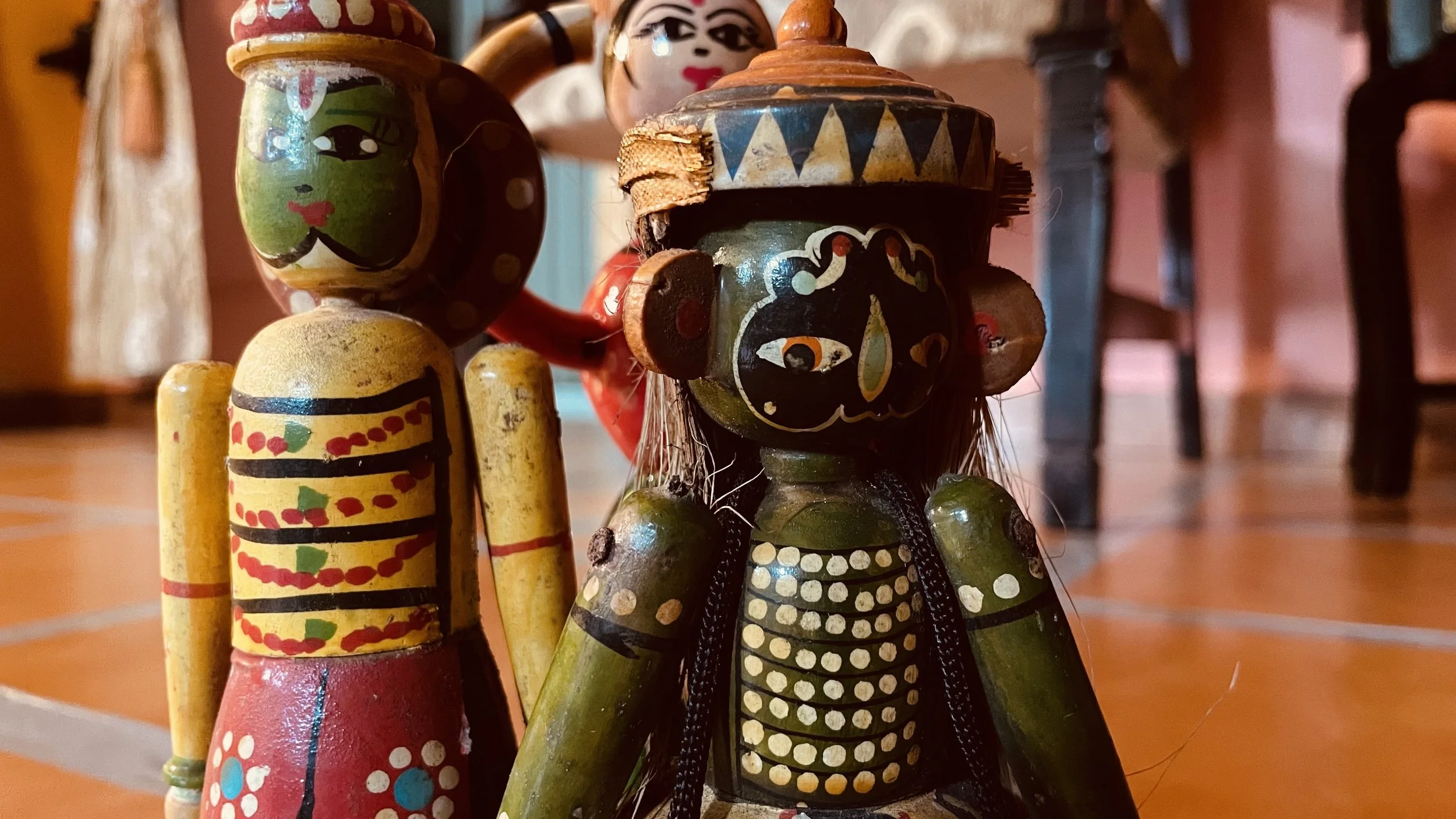Sustainable, Safe, and Fun: The Perfect Wooden Toys for Children
Just a short 1.5-hour drive from Bengaluru lies the quaint town of Channapatna—fondly known as the Toy City of Karnataka or Gombegala Ooru. Stop at any restaurant along this highway, and you’re bound to spot charming displays of small wooden toys: from tiny spinning tops to vibrant rocking horses. In some places, you might even discover innovative board games designed for adults too.
Channapatna Wooden toys on display
These timeless toys have a history that traces back to the 18th century. Legend has it that Tipu Sultan, then the ruler of Mysore, was captivated by the lacquered wooden toys of Persia. He invited Persian artisans to share their craft with the local community. Over time, the technique evolved: Indian artisans experimented with soft ivory wood and natural dyes like turmeric for yellow and spinach for green, eventually creating toys uniquely inspired by Indian culture.
Traditional Channapatna dolls inspired by Karnataka culture.
Traditionally, each toy was carved, shaped, and painted entirely by hand. Today, machines assist in parts of the process, requiring a careful hand-machine coordination, yet much of the craftsmanship remains manual, preserving its artisanal charm.
What’s exciting is how the Channapatna community is adapting to modern tastes. Alongside traditional spinning tops and rocking horses, you’ll now find Doraemon figures, Avengers characters, Rubik’s cubes, math ladders, musical instruments, and even quirky doll-shaped sharpeners and pencils—all handmade with the same care.
Why choose Channapatna toys for your children?
Made from ivory wood – lightweight, durable, and non-toxic.
Organic dyes and natural colors – safe for children and eco-friendly.
Plastic-free, toxin-free, and nearly unbreakable.
A beautiful blend of sustainability, safety, and timeless design.
However, this craft faces challenges. With the rise of mass-produced plastic toys, especially from China, and despite being a GI-tagged craft, Channapatna’s artisans struggle for visibility and consistent demand. Government recognition exists, but stronger consumer support is essential to sustain this centuries-old tradition.
Choosing a Channapatna toy means more than gifting your child a safe and long-lasting plaything—it’s a way to celebrate history, support local artisans, and embrace sustainability.


